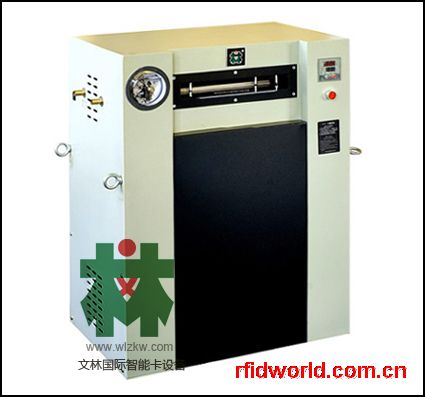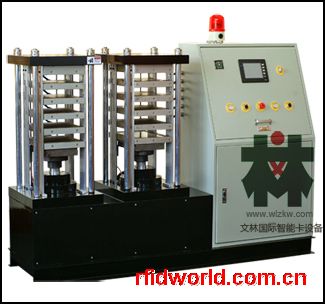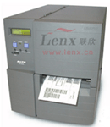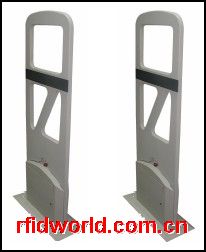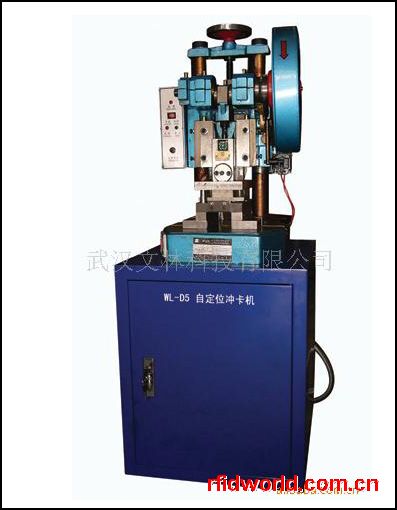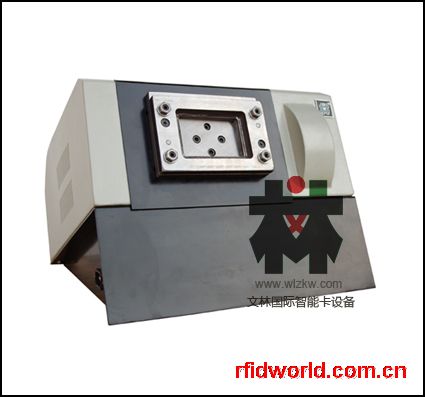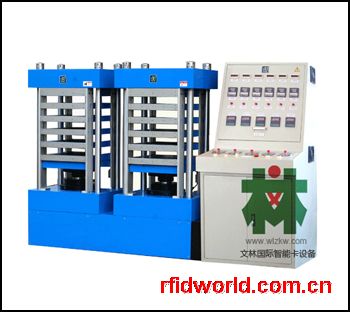频率如何引导无线射频技术
作者:contactless news
日期:2007-03-04 11:41:31
摘要:频率如何引导无线射频技术
关键词:电子标签
无线电波使所有的无线通讯——从用手机交谈到无线数据传输成为可能。无线电波象海浪一样,随着时间的推移要经过高峰和低谷。当一个无线电波从基线上升到峰值,然后下降到低谷,最后再回到基线时,我们把经过的这段时间叫做一个周期。如果一秒内无线电波经历了一个周期,我们就把它的频率称为1赫兹。在RFID的应用中,最常用的两个频率是125KHz和13.56MHz。该篇文章介绍了频率这个概念在RFID技术领域中的重要性。
In the late 1800s a German physicist named Heinrich Hertz created radio waves in the laboratory. A century later, we are still expanding upon Hertz’s discovery. Radio waves make possible all wireless communications–from mobile telephone conversations to wireless data transfer. They beam our television signals, bring music to our radios, and make it safe to fly by carrying air traffic information to radar systems. And, they make contactless cards contactless.
For his contribution to this field of science and engineering, Mr. Hertz’s name made the key unit of measurement in the field–the Hertz (Hz). Before we define the Hz however, we must first investigate the more basic concept of frequency.
For our readers working in the RF field (or those with stronger science backgrounds than the majority of us), this may seem rudimentary. However, for the thousands of Contactless News readers that work in corporate security offices, transit agencies, and the financial sector–our memories of high school physics have likely faded and a re-education will do us good. So here goes.
Like a wave in the ocean, a radio wave goes up and down over time. A single complete wave can be described as beginning at sea level, rising to its highest peak, descending past sea level to its lowest point, and then returning to sea level. The number of complete ocean wave ‘cycles’ that occur in a specific time interval could be described as the frequency.
A radio wave can be thought of in the same manner–going from a baseline to a peak, then to a low point, and back to the baseline. This is referred to as a cycle. Frequency is a measure of the number of cycles completed in a period of time. One cycly completed in one second equals one Hz. Thus, the unit of measurement called the Hz is actually the number of cycles per second.
Radio waves cycle extremely quickly and thus are seldom measured in Hz. Prefixes are added to Hz to make it large enough to describe frequencies in manageable terms. The prefix kilo (k) means 1000. A single kilohertz (kHz), therefore, is equal to 1000 Hz. The prefix mega (M) equals 1 million and, thus, a single megahertz (MHz) is equal to 1 million Hz.
In RFID systems, two common frequencies are 125 kHz and 13.56 MHz. Many read-only proximity cards used in access control arenas operate at frequencies on or around 125 kHz. That means that the radio waves are cycling at 125,000 waves per second. That is a staggering number, yet, the 13.56 MHz technology used in many contactless smart card systems relies on waves cycling at 13,560,000 waves per second!
While these frequencies seem astoundingly high, wireless networks and satellite systems operate at frequencies that are measured in gigahertz (GHz), or 1 billion cycles per second. Frequencies above 1 GHz are commonly referred to as operating in the microwave range rather than the radio frequency range–though this is not a delineation that is recognized universally.
So we see that it is the rate of the radio waves that determines frequency. And we see how this frequency is measured in Hz, kHz, MHz, and GHz. But what does this really mean? Why does a 900 MHz cordless telephone operate at 900 MHz while a 13.56 MHz fare collection card operates at 13.56 MHz?
In a RF system, there are two required components–a transmitter and a receiver. The transmitter sends radio waves while the receiver catches them. In order for a transmitter and a receiver to communicate–to send and receive radio waves–they must both be ‘communicating’ at the same frequency.
To illustrate this point, think of the transmitter as a whistle and the receiver as an ear. When a normal whistle is blown, it creates noise at a frequency that the human ear can receive. But when a dog whistle is blown, the frequency of the resulting noise is above that which is audible to the human ear. A dog can hear it, but a human cannot.
In a similar manner, the frequency recognized by a transmitter and a receiver must be compatible. When a 13.56 MHz card is presented to a 13.56 MHz reader, signals are recognized. But when a 125 kHz card is presented to the 13.56 MHz reader, they cannot even begin a dialog.
So frequency measures the number of cycles per second, but the practical importance of this is that it determines whether transmitters and receivers can speak to each other. At any given moment, the air is filled with radio waves of many different frequencies. If the waves accepted by a particular receiver were not limited to certain frequencies or frequency ranges, it would be overwhelmed with incoming signals.
In the different regions of the world, governments or quasi-governmental bodies have allocated the spectrum of available frequencies to specific uses. Thus, television receivers are not likely to be bombarded by non-approved signals and RFID card systems are not likely to be jammed by unauthorized or unintended signals from other RF-generating systems.
Okay, that is enough about frequency. Next we will examine how the radio waves are used to carry meaningful data–such as card ID numbers–between transmitters and receivers. To give you a hint, it is called modulation and it is a concept that is just as important to wireless systems as the concept of frequency.
摘自:contactless news
In the late 1800s a German physicist named Heinrich Hertz created radio waves in the laboratory. A century later, we are still expanding upon Hertz’s discovery. Radio waves make possible all wireless communications–from mobile telephone conversations to wireless data transfer. They beam our television signals, bring music to our radios, and make it safe to fly by carrying air traffic information to radar systems. And, they make contactless cards contactless.
For his contribution to this field of science and engineering, Mr. Hertz’s name made the key unit of measurement in the field–the Hertz (Hz). Before we define the Hz however, we must first investigate the more basic concept of frequency.
For our readers working in the RF field (or those with stronger science backgrounds than the majority of us), this may seem rudimentary. However, for the thousands of Contactless News readers that work in corporate security offices, transit agencies, and the financial sector–our memories of high school physics have likely faded and a re-education will do us good. So here goes.
Like a wave in the ocean, a radio wave goes up and down over time. A single complete wave can be described as beginning at sea level, rising to its highest peak, descending past sea level to its lowest point, and then returning to sea level. The number of complete ocean wave ‘cycles’ that occur in a specific time interval could be described as the frequency.
A radio wave can be thought of in the same manner–going from a baseline to a peak, then to a low point, and back to the baseline. This is referred to as a cycle. Frequency is a measure of the number of cycles completed in a period of time. One cycly completed in one second equals one Hz. Thus, the unit of measurement called the Hz is actually the number of cycles per second.
Radio waves cycle extremely quickly and thus are seldom measured in Hz. Prefixes are added to Hz to make it large enough to describe frequencies in manageable terms. The prefix kilo (k) means 1000. A single kilohertz (kHz), therefore, is equal to 1000 Hz. The prefix mega (M) equals 1 million and, thus, a single megahertz (MHz) is equal to 1 million Hz.
In RFID systems, two common frequencies are 125 kHz and 13.56 MHz. Many read-only proximity cards used in access control arenas operate at frequencies on or around 125 kHz. That means that the radio waves are cycling at 125,000 waves per second. That is a staggering number, yet, the 13.56 MHz technology used in many contactless smart card systems relies on waves cycling at 13,560,000 waves per second!
While these frequencies seem astoundingly high, wireless networks and satellite systems operate at frequencies that are measured in gigahertz (GHz), or 1 billion cycles per second. Frequencies above 1 GHz are commonly referred to as operating in the microwave range rather than the radio frequency range–though this is not a delineation that is recognized universally.
So we see that it is the rate of the radio waves that determines frequency. And we see how this frequency is measured in Hz, kHz, MHz, and GHz. But what does this really mean? Why does a 900 MHz cordless telephone operate at 900 MHz while a 13.56 MHz fare collection card operates at 13.56 MHz?
In a RF system, there are two required components–a transmitter and a receiver. The transmitter sends radio waves while the receiver catches them. In order for a transmitter and a receiver to communicate–to send and receive radio waves–they must both be ‘communicating’ at the same frequency.
To illustrate this point, think of the transmitter as a whistle and the receiver as an ear. When a normal whistle is blown, it creates noise at a frequency that the human ear can receive. But when a dog whistle is blown, the frequency of the resulting noise is above that which is audible to the human ear. A dog can hear it, but a human cannot.
In a similar manner, the frequency recognized by a transmitter and a receiver must be compatible. When a 13.56 MHz card is presented to a 13.56 MHz reader, signals are recognized. But when a 125 kHz card is presented to the 13.56 MHz reader, they cannot even begin a dialog.
So frequency measures the number of cycles per second, but the practical importance of this is that it determines whether transmitters and receivers can speak to each other. At any given moment, the air is filled with radio waves of many different frequencies. If the waves accepted by a particular receiver were not limited to certain frequencies or frequency ranges, it would be overwhelmed with incoming signals.
In the different regions of the world, governments or quasi-governmental bodies have allocated the spectrum of available frequencies to specific uses. Thus, television receivers are not likely to be bombarded by non-approved signals and RFID card systems are not likely to be jammed by unauthorized or unintended signals from other RF-generating systems.
Okay, that is enough about frequency. Next we will examine how the radio waves are used to carry meaningful data–such as card ID numbers–between transmitters and receivers. To give you a hint, it is called modulation and it is a concept that is just as important to wireless systems as the concept of frequency.
摘自:contactless news

 登录
登录
 注册
注册

